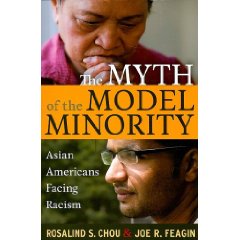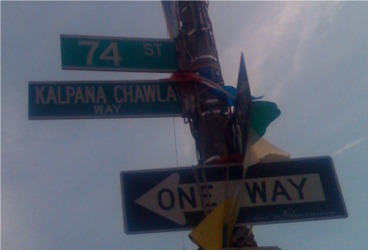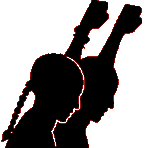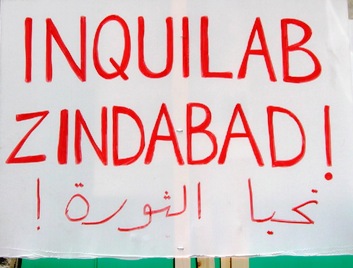From The Peopling of New York City
Introduction
The relations between the employees and employers in Jackson Heights and the class tensions exist are deeply concerning. The situation is very complex because it involves immigration status, economic status, place of origin in India, Pakistan, or Bangladesh, and the communities immigrants engage in here in the United States. As a result of these varying factors, this working-class population is often overlooked and oppressed. With the tide of oppression, there is a tide of struggle and fighting back as well.
History
The second wave of major immigration from the South Asian subcontinent started in 1965 when Congress passed the Immigration and Nationality Act of 1965 which allowed quotas of 20,000 people from each country to immigrate to the United States. One of the provisions of the act gave high preference to skilled, professional, and technical workers. This led to a major influx of middle- to upper-class urban Indians immigrating to the United States to take up white collar jobs such as physicians, scientists and NASA engineers. Thus, the South Asian community at large became a “model minority” of sorts because of the skewed population determinants. In the 1980s and 1990s, other immigration legislation provided access for low-income, lower middle class populations from India, Pakistan, & Bangladesh among other countries from the region to immigrate and take up blue collar jobs.
Unfortunately, with the persistence of the model minority myth, existence of these low-income, working class populations scattered throughout the United States is not acknowledged. They exist in pockets such as the 50th ward in Chicago,or Elmhurst and Richmond Hill in New York City. Not only does the model minority myth oppress the African-American and Latino populations it was intended to oppress, but it also oppresses low-income South Asian populations in the United States. It is often assumed that the South Asian community does not need financial help, immigration help, or other basic support services. Therefore, the low-income population within the community loses out.
Mr. Shiv Dass is a board member and former president of the Jackson Heights Merchants’ Assocation (JHMA). It is comprised of over 200 merchants in the area who are from all over the Indian subcontinent. The first store that opened up in Jackson Heights was Sam & Raj Appliances in 1973. India Sari Palace (ISP) opened after that and then others sollowed. Mr. Dass himself opened up his first store in 1980 and now has three: Karishma and Lavanya, both clothing stores on the west side 74th street, and Sri Krishna Jewelers. There is a Bangladeshi Business Association nearby as well, but Mr. Dass said they are very small and gave the impression that they are inconsequential. He proudly heralded some of the notable accomplishments of JHMA such as renaming 74th street Kalpana Chowla Way, after the Indian-origin astronaut who died in the Columbia spaceship. The association sponsors a number of celebrations including the Diwali Mela on 74th street and celebrating Indian Independence Day at City Hall.
The Struggle
Many of the older immigrants and white collar South Asian immigrants do not take kindly to their low-income, working-class counterparts because there’s a perception that this population is destroying the “flawless” image of South Asians in the United States. There is a subtle class tension that is pervasive throughout the community. This is sometimes manifested in the employer-employee relations in the business community. Often, the owner of a successful business lives in an affluent neighborhood away from the business district, such as Jackson Heights. Meanwhile, they employ recent or undocumented immigrants from their respective communities (i.e. Bangladeshi, Punjabi, Gujurati, etc.) in their stores. Negative sentiments are expressed through verbal abuse, low wages, long hours, and threats.
To justify hiring co-ethnics because they may bring cultural and social capital which may increase in the customer base, is looking at the situation from a purely business viewpoint. In the process of hiring co-ethnics, many of the business practices and hierarchical rigidities are transferred over from the native country. This may involve some of the aforementioned abuses. Certainly, in the South Asian community, some business owners may feel the power and privilege to have unreasonable working conditions because of class hierarchies back in their native place.
Social blackmail can also occur, as evidenced by the interview with Hosiar Appa. Due to the fact that co-ethnics are part of the same social community, badmouthing and rumor mongering can happen. Although it is possible that it can happen the other way around, employees can rarely badmouth their employers because they need to keep their jobs and more importantly, the community may not consider their opinion seriously because they are of lower class. This leverage the employers have definitely scares the employees.
Many times, salaries are not paid on time or to the family back in the native country or paid at all. At times, employers escape paying their employees by promising them that the money will be paid to the employee’s family in the native country. Many people work like this to provide a means of support and upward economic mobility for their family. However, this causes bad living conditions for the employees in America because they are not always provided adequate living and working conditions by the employer, as promised. Some employers withhold the wages altogether. Many employees, especially the undocumented ones cannot protest this because they may be reported.
Such factors such as false promises and social blackmail lead to the exploitation of workers. Despite the ill-treatment of the employers, the employees are at fault as well. Oftentimes, they buy into this vicious structure. Unlike in America, there is not much of a culture of self-advocacy in countries such as India, Pakistan, and Bangladesh. For this reason, complacency overtakes the worker and they become stuck in the situation.
Inquilab: The Revolution
Two organizations that are fighting this social injustice in Jackson Heights are Desis Rising Up & Moving (DRUM) and Andolan. DRUM primarily deals with issues of immigration and youth empowerment. Since many of the members of DRUM are workers, DRUM plans to open up a South Asian Worker’s Center that will act as an intermediary between the employers such as the Jackson Heights Merchants’ Assocation (JHMA) and employees. This is will open in the summer of 2009 and create collective bargaining power for workers. The second organization is Andolan which actively organizes South Asian workers in the area. Andolan means movement in Hindi. Among the different models of organizing, Andolan uses education, advocacy, and mass mobilization. Many of the members are Bangladeshi women. They are mostly low-income immigrant women of color, and so they certainly feel the need to fight oppression on many fronts. Other than being salesgirls or ladies at the counter in established stores in Jackson Heights, many members are also domestic workers, like Hosiar Appa. They have led the fight for protection of domestic workers as a part of the Domestic Workers United Coalition.
The interview with Monami Maulik gave very deep insights in the complexities of worker's issues. Issues of income and immigration are inherently intertwined and many employers take advantage of that. Ms. Maulik presented the situation in very black and white terms,as did Mr. Dass. Ms. Maulik presented the situation as if all employers are abusive while Mr. Dass presented the situation as if no employers do anything wrong. This is in an indication that there is little if any communication between employers and employees. Perhaps communication of each party's interest would facilitate a smoother relationship between them.
Both the organizations that are present in Jackson Heights chant: "Inquilab Zindabad" which means "Long Live the Revolution" in Urdu. Indeed both are taking a radical approach to social justice. Perhaps they were forced to do so in order to respond to a stiffly conservative and capitalist business community. If neither party moves towards the center to meet each other, progress will be quite difficult to achieve. To meet this end, communication is the foundation for change.
Desis Rising Up & Moving (DRUM)
Back to Running an Ethnic Business




